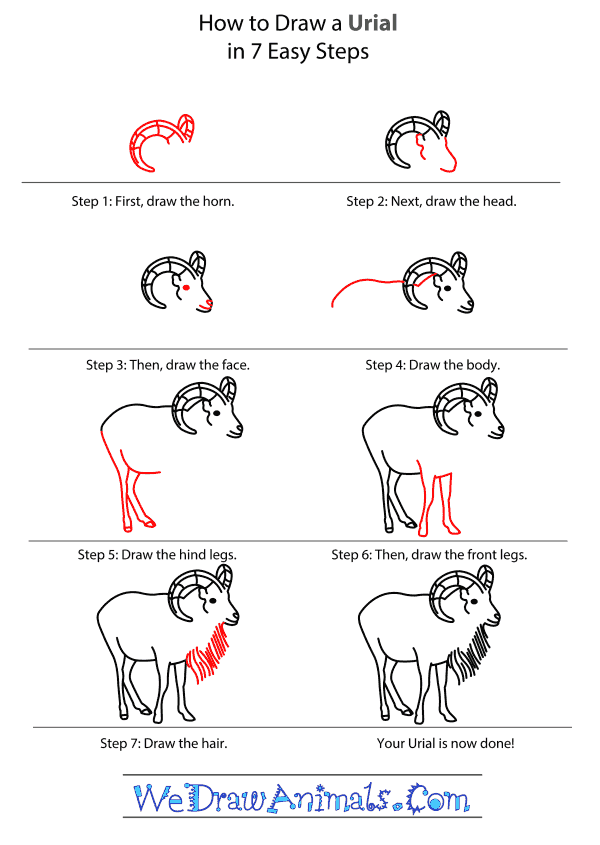In this quick tutorial you'll learn how to draw an Urial in 7 easy steps - great for kids and novice artists.
The images above represent how your finished drawing is going to look and the steps involved.
Below are the individual steps - you can click on each one for a High Resolution printable PDF version.
At the bottom you can read some interesting facts about the Urial.
Make sure you also check out any of the hundreds of drawing tutorials grouped by category.
How to Draw an Urial - Step-by-Step Tutorial
Step 1: First, let's draw the horn. It is a curved line that is almost a full circle. Add line details. These wild sheep are easily recognized by the style of their horns!
Step 2: Draw the face. Give your urial an eye, nose, and mouth.
Step 3: Now draw the body with a line that curves around to the rump. Make sure you go around the horn.
Step 4: Draw the back legs and the belly.
Step 5: Now add the front legs. These wild sheep spend most of their time in wide open grasslands.
Step 6: Last, draw the neck-ruff with some straight lines. The males grow this fur longer in the winter! If you'd like to color your urial, their ruff is black, their legs and belly are pale brown to white, and the rest of their fur is reddish brown.
Interesting Facts about the Urial
The urial (Ovis orientalis) is a type of wild sheep that lives in Central Asia. They live mostly in grassy sloped areas, and avoid rocky areas in the mountains.
Did you know?
- The urial is also called the arkars or the shapo.
- The males have two large horns that curve behind their heads and can grow to over a foot long. Females have shorter and smaller horns.
- The urials graze mainly on grass, but they also eat leaves and shrubs.
- The habitat of urials have been threatened by cattle, sheep and goats, which eat the same food. These other animals also can infect the urials with diseases.
- Because they live in lower and more accessible areas, they are often very close to human populations. That makes them an easy target for hunting and poaching, and the males are prized by trophy hunters. This has caused them to be overhunted, and lowered their population.
Lesson plan note: While urials now live in open areas, there is some evidence that they used to live in more wooded areas and adapted to open spaces based on changing environment. Discuss why it would be good for a species to learn to adapt to new environments.







